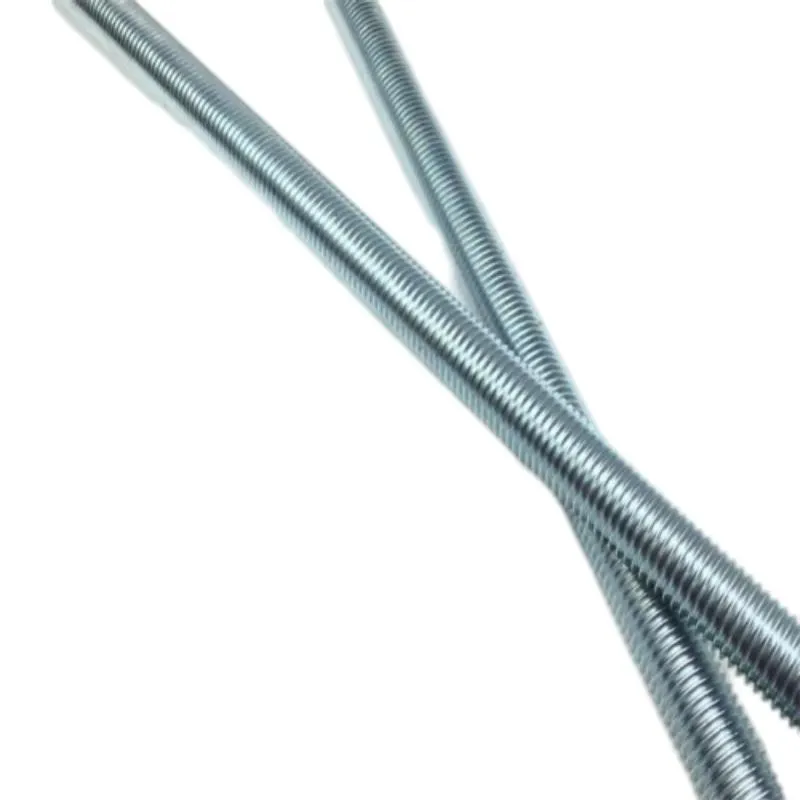8월 . 18, 2024 05:51 Back to list
Bending Strength Analysis of Threaded Rods in Structural Applications
The Importance of Bending Threaded Rods in Construction and Manufacturing
Threaded rods are integral components in various construction and manufacturing applications. Their unique design allows for efficient fastening and stability in structures, making them essential in building projects and mechanical assemblies. However, there are instances when bending threaded rods becomes necessary to meet specific design requirements or accommodate spatial constraints. Understanding the intricacies of bending threaded rods can significantly enhance their application and functionality.
Understanding Threaded Rods
Threaded rods are long, cylindrical pieces of metal with continuous threads running along their length. They are typically made from various materials, including steel, stainless steel, and even plastic, depending on the intended application. The threaded design enables the rod to be paired with nuts and other fasteners, creating strong joints. Their versatility allows them to be used in different settings, from construction scaffolding to machinery assembly.
The Need for Bending
While the straight application of threaded rods holds significant advantages, certain construction scenarios or design parameters may necessitate bending these rods. For example, in structural reinforcements within confined spaces or around obstacles, bending a threaded rod ensures that the components can fit seamlessly into the intended design. Additionally, in custom projects that require unique angles, a bent threaded rod might offer a more effective solution than multiple straight joints.
Techniques for Bending
There are several methods for bending threaded rods, and the chosen technique often depends on the material and the extent of the bend required.
bending threaded rod

1. Manual Bending For small adjustments or minor bends, hand tools such as pipe benders or vise grips can often suffice. Care must be taken to avoid damaging the threads, as they play a critical role in the rod's functionality.
2. Hydraulic Benders For more significant bends or heavy-duty applications, hydraulic benders provide better control and leverage. This method allows for smooth, consistent bends without compromising the rod's strength.
3. Heat Bending In some instances, applying heat to a threaded rod before bending can reduce the risk of fracturing. Heating the metal increases its malleability, allowing for more complex bending without losing structural integrity.
Considerations in Bending Threaded Rods
While bending can enhance the functionality of threaded rods, it comes with several considerations. One major factor is the change in load distribution. When a rod is bent, the stress is redistributed along its length, which can lead to potential points of weakness. Additionally, bending may alter the thread integrity, affecting the rod's ability to hold fasteners tightly.
It’s crucial to avoid exceeding a certain bend radius. The American National Standards Institute (ANSI) provides guidelines outlining the minimum bend radius for various materials, ensuring the rod maintains its strength and durability.
Conclusion
Bending threaded rods is an essential technique within construction and manufacturing. It allows for greater flexibility and customization in design while maintaining structural integrity. By understanding the methods and considerations involved in bending threaded rods, engineers and manufacturers can better utilize these versatile fasteners in their projects. Utilizing proper bending techniques can lead to innovative design solutions and improve overall project efficacy. As industries continue to evolve, the demand for adaptable and efficient components like threaded rods will only grow, making mastery of bending techniques an invaluable skill.
-
Threaded Rods in Art Where Structural Integrity Meets Aesthetic Vision
NewsApr.11,2025
-
Optimize Industrial Fastening with Precision-Crafted Hex Nut Solutions
NewsApr.11,2025
-
Master Fastening with Premium Stainless Steel Carriage Bolts
NewsApr.11,2025
-
Hex Sleeve Anchors: Smart Choice for Industrial-Grade Concrete Fastening
NewsApr.11,2025
-
Hex Head Timber Screws: Reinventing Safety in Modern Livestock Enclosures
NewsApr.11,2025
-
Elevate Efficiency with Robust Beam Clamps
NewsApr.11,2025


